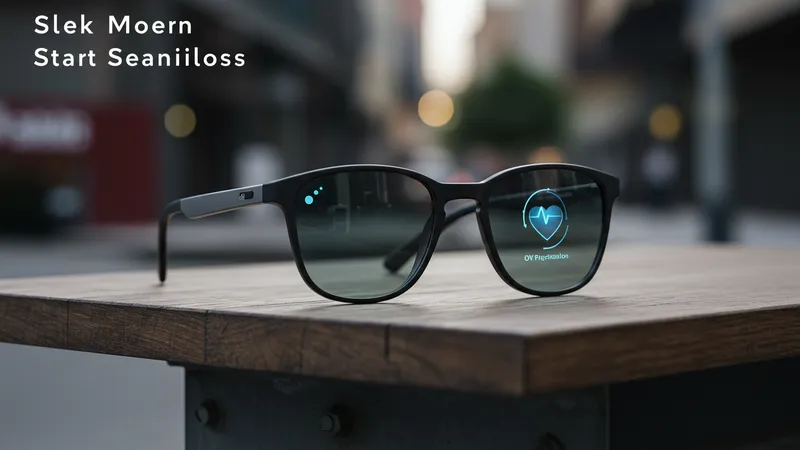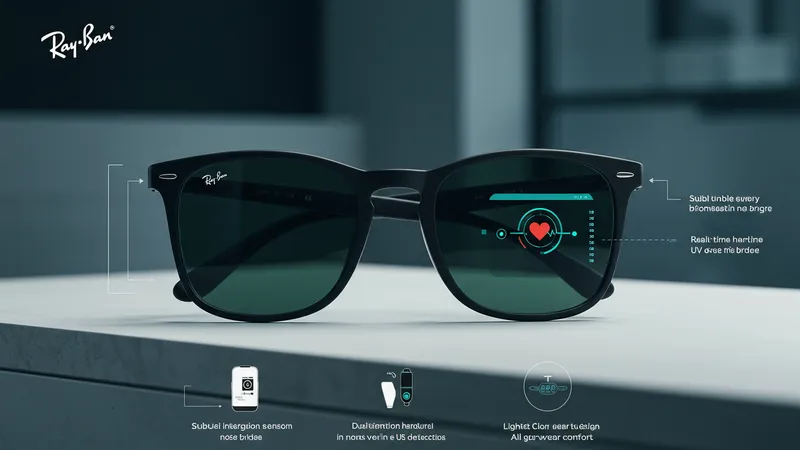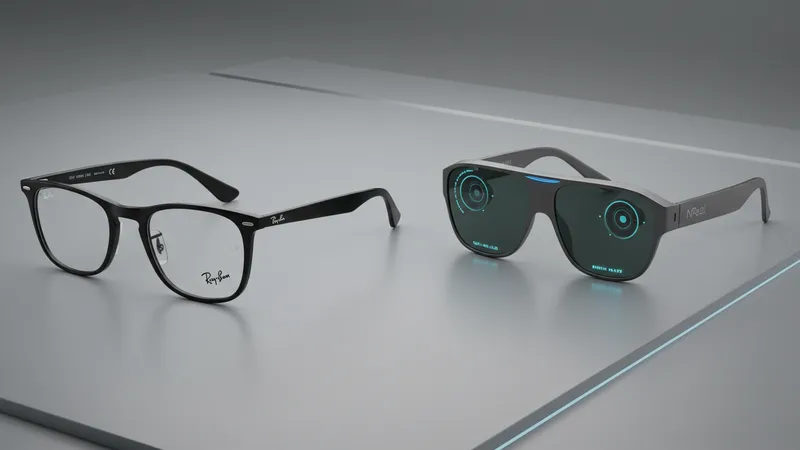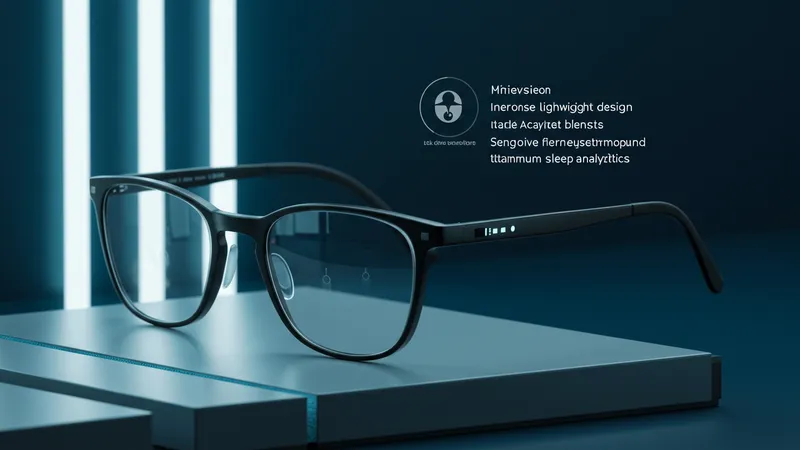

The fusion of smart glasses with everyday style represents a growing trend where digital technology seamlessly integrates into the world of fashion. No longer confined to fitness trackers or basic wrist wearables, these next-generation smart glasses are designed to monitor wellness metrics while also serving as fashionable accessories. Brands are investing in innovative materials, minimalist designs, and subtle technology to create eyewear that delivers both health data and aesthetic appeal.
By embedding sensors and lightweight processors within chic eyewear frames, developers are pushing the boundaries of how wearables fit into our daily lives. Today’s smart glasses don’t just track steps or calories—they offer advanced features like heart rate and blood oxygen monitoring, UV protection, activity tracking, and even notifications, all while looking indistinguishable from designer frames. This combination of sleek design and health insights is reshaping how individuals approach both style and self-care.

Design innovation plays a key role in the appeal of fashionable health-monitoring smart glasses. Unlike bulky early prototypes, modern models prioritize subtlety and ergonomics, blending high-tech sensors into frames that mirror classic or trendy eyewear designs. The result: accessories that feel at home in a business meeting or social gathering, enabling users to blend technology with their personal look.
Functionality is equally critical. With capacities ranging from continuous activity tracking to voice-activated notification systems, smart glasses now rival some of the market’s top wrist wearables. For instance, the Vuzix Blade can deliver wellness insights via discreet display, while Nreal Air emphasizes comfortable extended viewing, broadening the idea of what eye-based wearables can accomplish.
Compatibility remains at the forefront. Most leading smart glasses seamlessly sync with popular smartphone platforms and wellness apps, allowing users to monitor their health without juggling multiple devices. Many products also offer prescription lens options, reinforcing their commitment to function and style for a diverse user base.
This new era in wearable technology isn’t just about convenience—it’s about empowerment. Fashion-smart smart glasses allow people to actively manage their wellbeing while confidently expressing their personal taste. As the market matures, it’s clear that we’re only seeing the beginning of how stylish innovation can transform traditional wellness tech. The deeper details reveal even more valuable insights ahead…
Key features setting fashionable smart glasses apart include biometric sensors, customizable frames, and advanced display integration. Unlike traditional eyewear, these smart glasses unobtrusively incorporate miniaturized hardware within the temples or nose bridge, allowing for real-time health tracking such as heart rate monitoring and ambient UV detection. These technologies offer an enhanced user experience, blending unobtrusive wellness insights into everyday wear.

Customizability is a signature advantage for the brands leading this trend. Frames like those from Ray-Ban Stories come in multiple colors and styles, including prescription options, ensuring that personal flair isn't sacrificed for functionality. Top models now emphasize lightweight build and balanced weight distribution, supporting all-day comfort without sacrificing durability—a critical factor in their broad appeal.
On the display front, products like the Nreal Air stand out by using advanced AR projection overlays, allowing users to view notifications, workout stats, or navigation prompts instantly. Such integration transforms these glasses into practical tools for both wellness and productivity, moving beyond basic notification delivery to offer on-the-go information and actionable insights directly within the user’s field of view.
Power management and battery life also play a pivotal role. Smart glasses like Vuzix Blade utilize efficient charging systems and low-power sensors, yielding several hours of continuous use. This balance of style, performance, and longevity continues to push the boundaries of wearable innovation—prompting ongoing advancements in both form and function as consumer expectations grow more sophisticated.
Key differences between leading products center on how each balances fashion, functionality, and user interface. For instance, Ray-Ban Stories is tailored for those who prioritize classic aesthetics with discreet tech. With touch controls embedded seamlessly in the arms and standard Ray-Ban lens options, they deliver notifications, music, and basic activity data while preserving the timeless Wayfarer look.

Nreal Air, meanwhile, focuses heavily on immersive display. Its low-profile design conceals micro-OLED projectors to create sharp augmented reality overlays, allowing for features like video streaming in private mode or following exercise metrics during activity. Its lightweight build ensures that technology doesn't overshadow daily comfort and style—a main selling point for style-conscious tech enthusiasts.
Vuzix Blade appeals to professionals and health-focused individuals who want direct access to real-time metrics on their lenses. The built-in display can show step counts, navigation prompts, and communication notifications all while looking like standard business eyewear. This is ideal for multitaskers who prize both subtlety and breadth of smart functions in their accessories.
User experience is heavily influenced by app ecosystem connectivity. Most leading options now support both Android and iOS, providing dashboards for activity history, setting preferences, and adjusting notifications. The most successful smart glasses make setup and daily use intuitive, lowering the barrier for people trying wearable health tech for the first time.
The evolution of stylish health-monitoring smart glasses is underpinned by growing demand for seamless, invisible tech. Designers are exploring new materials, such as ultra-lightweight acetate blends and titanium, to produce eyewear that is durable yet almost undetectable to the wearer. Future trends point towards even sleeker silhouettes and broader frame sizes, tailored to changing fashion sensibilities and expanded accessibility.

Health advancements remain at the core of this transformation. Sensor miniaturization will soon allow for additional capabilities—think hydration tracking, more granular sleep analysis, or discreet alert systems for environmental hazards. Coupled with continuous updates from companion apps, this positions smart glasses as the future foundation for comprehensive, passive wellness monitoring.
Fashion partnerships, such as the Ray-Ban and Meta collaboration, will likely become more prevalent as consumers look for familiar brands to lead in wearable tech. These alliances leverage decades of frame design expertise to win consumer trust and set the trend for future releases.
Ultimately, the horizon extends well beyond fitness and notification delivery. With growing interest in digital wellness and style-driven innovation, the market for health-monitoring smart eyewear is set to expand with models that elegantly balance new functions and timeless smart design. Each improvement further integrates digital health into our everyday routine.
Adoption of stylish smart glasses for health monitoring is rising, especially among users seeking a discreet, always-on health companion. Surveys suggest that people who previously avoided wearable technology due to aesthetics are now investing in health-enabled glasses due to the low-profile look and design flexibility. User base growth is mainly seen among professionals and style-minded early adopters.

Privacy remains at the forefront of smart eyewear design considerations. Secure data transmission, customizable sharing preferences, and transparent privacy policies are common among current leading products. Most brands allow users to control which metrics are tracked, when, and how their data is stored—an increasingly critical requirement as wearable tech becomes more integrated into daily life.
Looking ahead, integration with other smart devices and platforms is a pivotal focus. The next wave will emphasize interoperability—seamless connection between eyewear, smartphones, smartwatches, and even smart home devices—yielding a holistic health monitoring and lifestyle management ecosystem. The ultimate goal: provide fluid, nearly invisible connectivity without overwhelming the user with technical complexity.
The era when style and substance were mutually exclusive in wearable tech is ending. Health-monitoring smart glasses are leading the charge, empowering individuals to prioritize wellbeing without sacrificing personal taste. As development accelerates, the possibilities for blending fashion, health, and digital life in smart glasses will only continue to broaden with time.